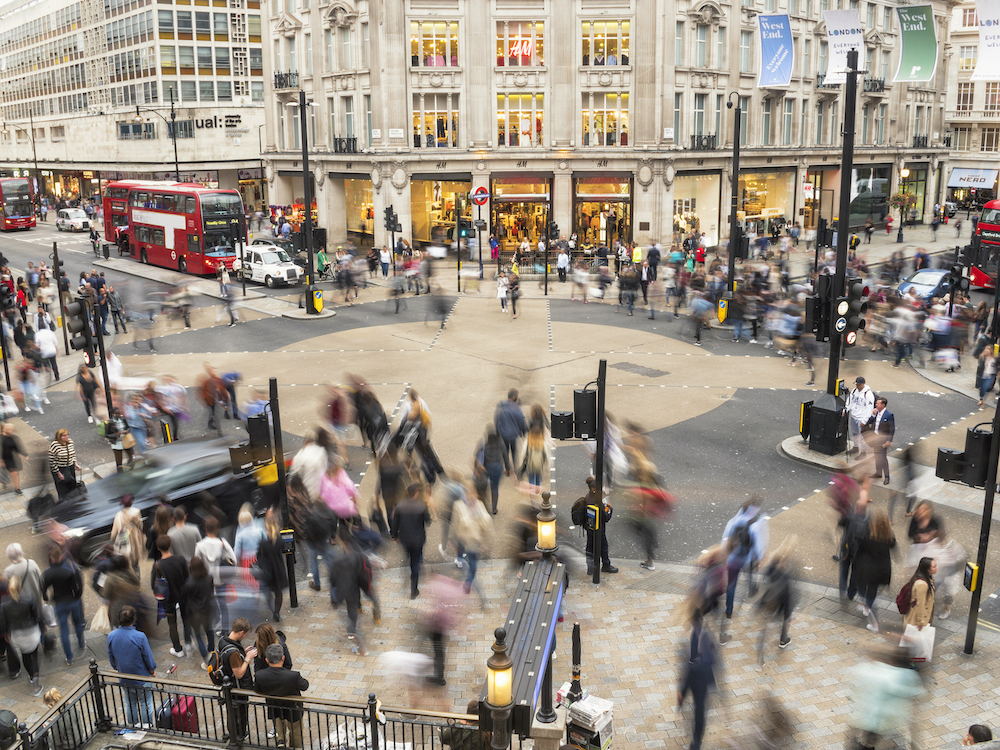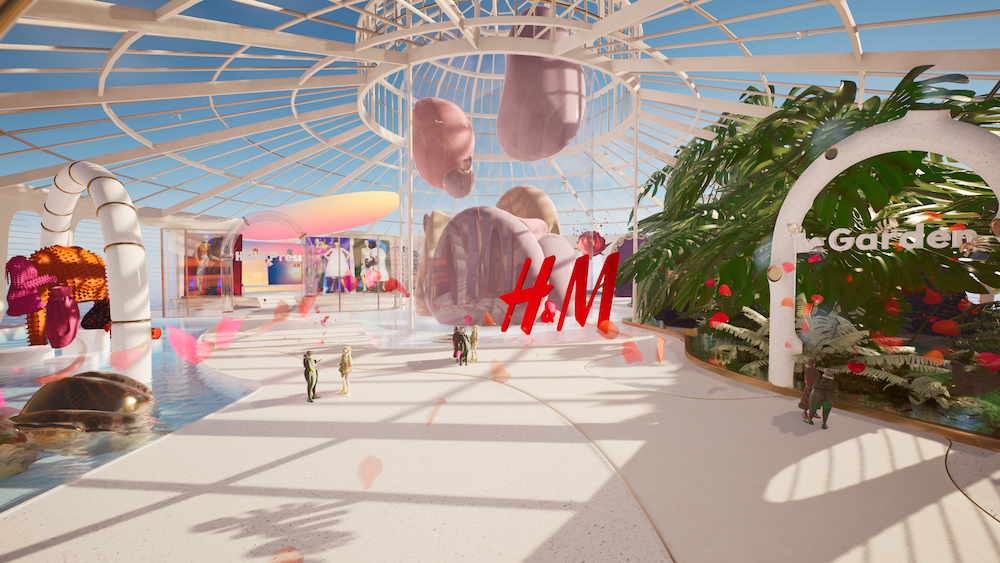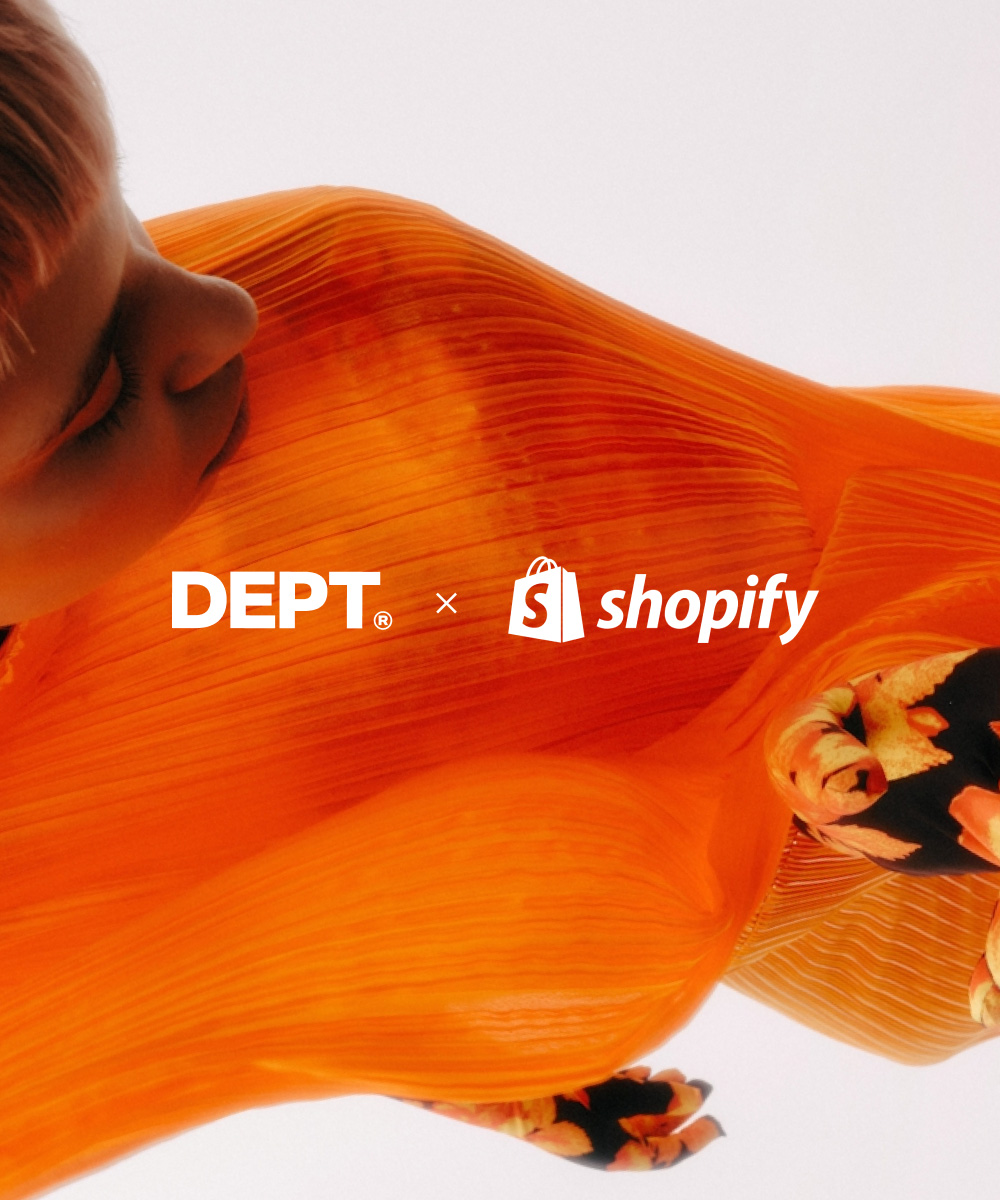The future of retail is phygital

Bricks-and-mortar retail is a thing of the past. Think again.
Just as we thought physical stores were on the decline, more and more e-commerce brands are popping up on our high streets. It’s not surprising, as in August 2022, online accounted for only 24.2% of all retail sales in the UK, compared with a record 37.8% in January 2021; suggesting that shoppers are heading back to the high street for good.
And brands are taking notice. This month, Deliveroo opened its first physical store ‘Deliveroo Hop’ on Oxford Street in London, adapting its dark store model to a “phygital” concept. A move that has surprised many, but with strong data backing them up, it’s not surprising to see why Deliveroo has taken the plunge. We’ll delve into this more later on.
It’s becoming apparent that physical and digital retail can no longer be siloed. With online retail sales struggling and it becoming a top priority to connect with customers more meaningfully, you can see why blending the two worlds is moving up the agenda.
So what does the future look like for retailers? It’s time to get phygital, let’s explore.

What is “phygital”?
Phygital is a buzzword that’s rapidly being adopted in the retail industry. It’s all about combining the best of both the physical and digital worlds into one destination.
For retailers, the opportunity lies in developing a hybrid approach that delivers frictionless, integrated experiences as customers move between digital and physical spaces. This could be anything from real-time, in-store stock levels and seamless click and collect through to immersive, interconnected physical or virtual stores.
Although the merging of the two worlds is usually adopted by retailers who have both a physical and digital presence, it’s not limited. We’re seeing more and more digital only retailers experimenting with the physical world through the likes of pop up stores. But what has caused the shift to blur the lines between digital and physical shopping spaces?
Generation Z
Gen Z is a huge driving force behind the changing retail landscape. They’re true digital natives. Since a young age, they’ve been exposed to the internet, social media and smartphones.
They currently account for 15% of the worldwide population and their spending power is growing. According to a report by ClearPay, Gen Z is spending 7% above pre-covid levels, unlike Millennials who are still at the same level as in January 2020. And by 2030, they are forecasted to account for 11% of UK retail spend. Gen Z should be a particular focus for fashion brands, as fashion accounts for 75% of their total spend.
Despite growing up in a digital world, it’s not all about online for Gen Z. In a recent survey of all age ranges, Gen Z came out most likely to go to a store to purchase a product after researching online and e-commerce accounts for only 7.4% of their shopping.
The online world can be pretty lonely at times, so it’s not surprising that Gen Z-ers are named as one of the loneliest generations. Physical retail spaces help them to escape the digital bubble, with 58% of Gen Z stating that in-store shopping allows them to disconnect from the digital world.
That’s why Gen Z aren’t only looking for products in stores. Three out of four are looking for a well-curated experience. But, they still use digital channels to support their shopping experience, with nearly 50% using a store’s mobile app during their visit.
And finally, Gen Z are trendsetters, so other generations will eventually follow their lead. They’re clearly a generation that retailers can’t ignore, so getting solutions in place now will pay dividends in the long run.
Consumer expectations
On the whole, consumer expectations and wants are evolving. In 2021, it was reported that 75% of consumers tried a new shopping behaviour in the previous 18 months.
Convenience and personalisation are key factors in choosing who to shop with these days. In a survey, 68% said that a convenient customer experience will make them a return customer. Plus, 76% stated that personalised communication was a key reason in considering a brand. But, the always-on customer experience needs to transcend between digital and physical – wherever the customer may be.
Zara is leading the charge when it comes to customer convenience. For those looking for specific products, but want to see it in real life before purchasing, Zara’s ‘store mode’ is the perfect addition to their app. It gives users the option to find the product in-store and book a fitting room to try it out. Alternatively, those looking for convenience can check the availability of a product in a local store, purchase it through the app and then collect from the store within 30 minutes.
New technology
Alongside the changing consumer landscape, new technologies are constantly emerging with the potential to enhance customer experiences as they transition between the physical and digital world.
Over the past few years we’ve seen the rise of Web3, as well as many brands entering the virtual world of the metaverse and experimenting with nonfungible tokens (NFTs).
We can see why so many brands are investing in the metaverse. In the next 12 months, 43% of consumers say they are likely to enter the metaverse, and 62% of Gen Z say they are willing to make a purchase in the metaverse. Technology is key in bringing the physical and digital worlds together, and we’re seeing retailers use tech in new, creative ways to engage with customers and enhance the experience.
Recently, Zara launched its third phygital collection, Y2K Creatures, in the metaverse. The 10 item collection can be worn both inside and outside the digital realm. For ultimate personalisation, exclusive digital accessories are available including hairstyles and wallpaper to make sure the consumer’s avatar looks just like them in real life!
And earlier this year, H&M created its first virtual showroom experience to showcase its Innovation Story collection in a pioneering virtual environment. It allowed visitors to interact with the brand through meaningful exchanges in an immersive way. It was also a space where influencers, stylists, customers, employees and press can learn more about the brand.
As well as virtual technology, H&M is also adopting new technologies in its stores. In 2022, the brand started using smart mirrors in selected COS stores. Shoppers can get personalised styling recommendations from the mirror based on the products they brought in. They can also request new items to be sent in without having to leave the space. Not only that, they’ve also trialled showroom floor mirrors that can assist with virtual try-ons for customers.

Is online-only still a viable model?
It’s understandable why we’re seeing more blended worlds, and the key role it plays for retailers. So, not only are physical retailers using digital to enhance the customer experience between in-store and online, we’re beginning to see e-commerce only retailers entering the physical space.
In 2021, Amazon opened check-out free stores in the UK, Amazon Fresh. Customers can simply walk into the store, pick up their items and walk straight out. Cameras monitor their purchases and deduct the amount from their Amazon account. Here, Amazon is tapping into an audience that wants quick convenience, with 67% of Gen Z and 65% of Millennials saying they would visit a checkout-free supermarket.
Then we have Deliveroo who, as mentioned, have just opened their first physical store in partnership with Morrisons, where customers can order food through the app and pop in to pick it up, as well as shop in-store for groceries via digital kiosks. The move came off the back of research they commissioned which found 24% of Londoners use rapid grocery services once a week. Again highlighting consumer demand for convenience.
Following a few difficult years, we’re now seeing some online-only brands struggle even more. Eve Sleep has called in the administrators and ASOS issued a profit warning. Could this be due to the market heading back to the high street? And as consumers are wanting more in-person experiences, is online only potentially a flawed model?
This may be why online-only brands are entering the physical retail space, like Gymshark which is soon to open a flagship store in London. And the likes of MATCHESFASHION that opened 5 Carlos Place to bring customers closer to the brand; fusing the digital and physical realms with curated edits, exclusive events and try at home before you purchase.
E-commerce retailers are now recognising the importance of a physical presence to meet the wants and needs of consumers. Although not all online-only retailers are heading straight to the high streets, they’re certainly experimenting and testing the waters with physical spaces through pop up stores and launch events.
Early this year, membership-only online beauty brand, Beauty Pie, opened a pop up store in London. The ‘warehouse of dreams’ gave shoppers the opportunity to learn more about the brand, try out their products and get advice from their team of experts. This is perfect when taking into consideration that 51% of Gen Z and Millennials value the in-store experience when buying beauty products. And, 53% of Gen Z would rather go in-store to buy beauty products.
Making data-led decisions
All this isn’t possible without data. It’s essential to understand customer needs and use data to make informed decisions. For an e-commerce only retailer to enter the physical retail space is a huge move, so it can’t be done on a whim.
Deliveroo is a prime example of making data-informed decisions. For retailers spanning across both realms it’s essential to collect data at each touchpoint to optimise the customer experience and gain an understanding of their needs and desires.
Whether you’re an e-commerce only retailer dipping your toes into the physical space, or you’re a retailer in both worlds using digital to enhance experiences, a phygital approach can ultimately help to build brand affinity by developing deeper, meaningful connections with consumers. Which if done well, will increase engagement, customer loyalty and revenue for retailers.
To find out how DEPT® can ensure your commerce strategy is future-ready, get in touch with our team today.
More Insights?
View all InsightsQuestions?
VP of Emerging Tech



